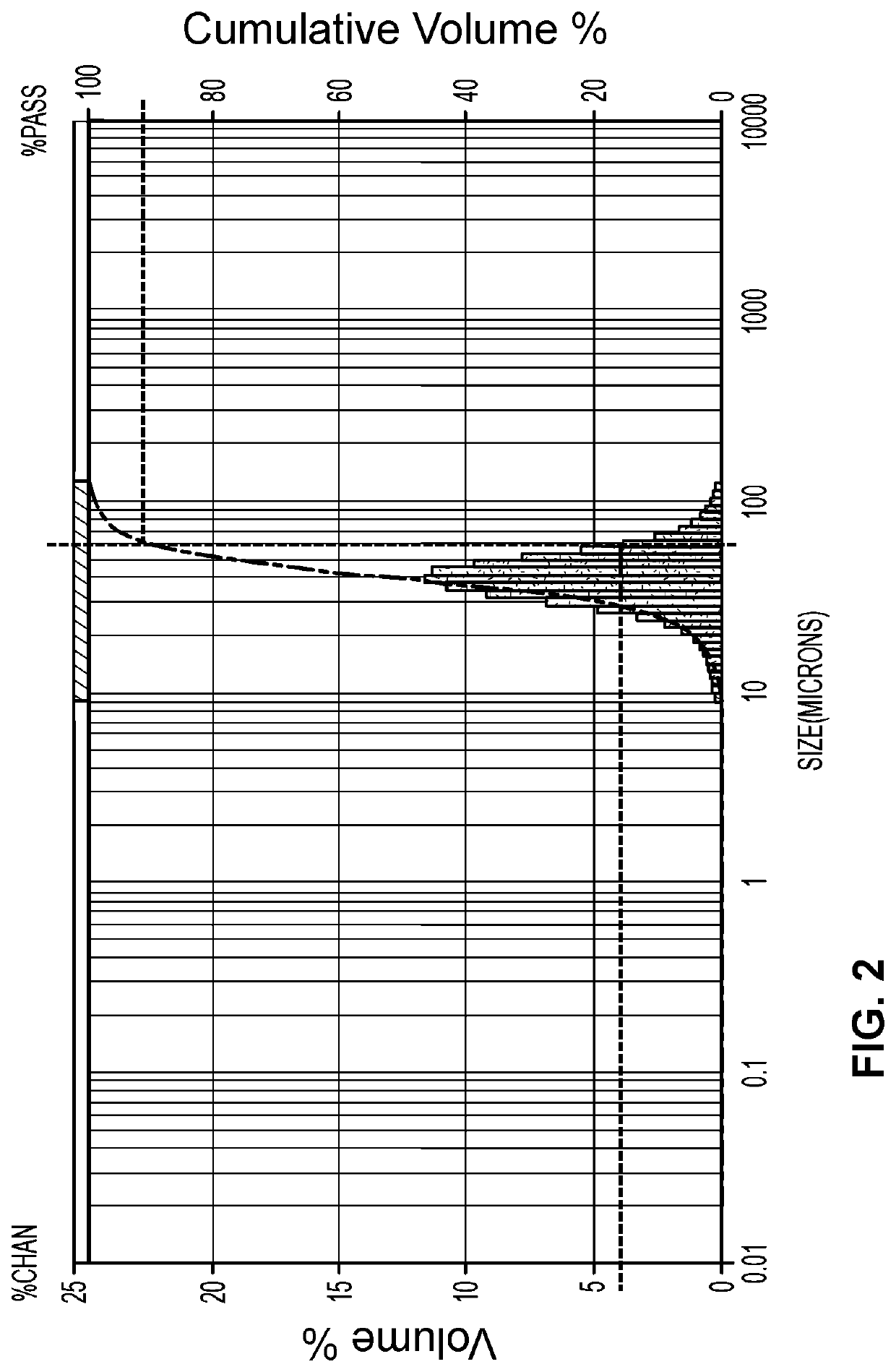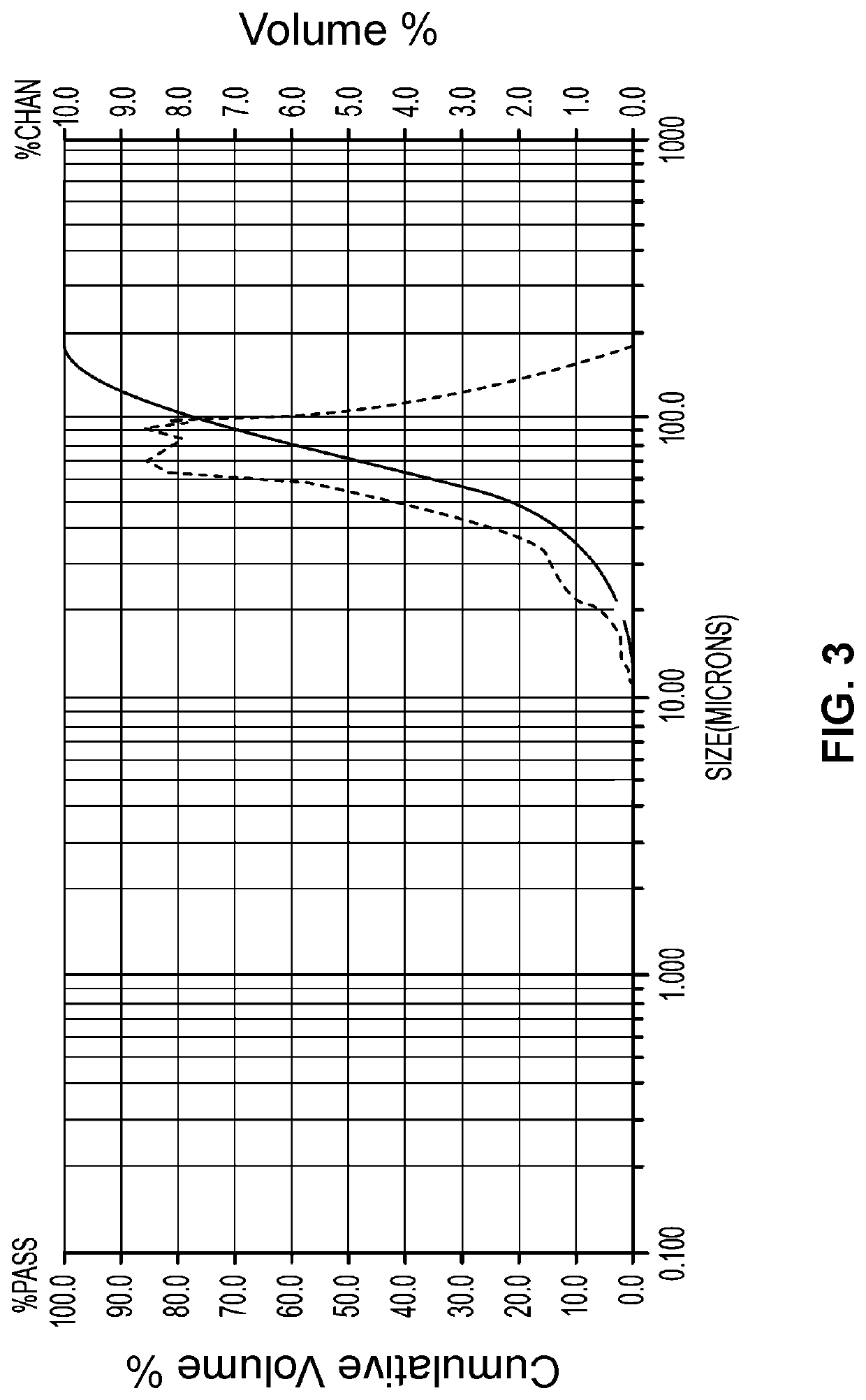Dispersions for impregnating arrangements of fibers with thermoplastic materials and systems for and methods of using the same
- Summary
- Abstract
- Description
- Claims
- Application Information
AI Technical Summary
Benefits of technology
Problems solved by technology
Method used
Image
Examples
example 1
Unidirectional Tapes Produced Using Some of the Present Dispersions
[0064]A material including polycarbonate and a non-halogen-based flame retardant dispersed throughout the polycarbonate was ground to produce two sets of particles: a first set having the particle size distribution shown in FIG. 3 and a second set having the particle size distribution shown in FIG. 2. Due to the flame retardant, the material had a glass transition temperature of approximately 105° C. For each set of particles, the particles were dispersed within an aqueous solution to produce a dispersion. Each of the dispersions was sufficiently stable.
[0065]First and second batches of unidirectional tapes were produced; for the first batch (“Batch 1 Tapes”), the dispersion including the first set of particles was used, and, for the second batch (“Batch 2 Tapes”), the dispersion including the second set of particles was used. To make each tape, carbon fiber tows were spread and passed through a bath containing the d...
example 2
Laminates Produced Using Some of the Present Dispersions
[0070]Laminates were each produced by consolidating: 16 layers of the Batch 1 Tapes (“Batch 1 Laminates”) or 16 layers of the Batch 2 Tapes (“Batch 2 Laminates”). The laminates were unidirectional laminates, meaning the tapes of each were aligned with one another along their fiber directions, and each had a thickness of approximately 2 mm.
[0071]The laminates were each produced by pressing its tapes between pressing elements of a static press using either a low-temperature consolidation cycle (“Low Cycle”) or a high-temperature consolidation cycle (“High Cycle”). The consolidation parameters for the Low Cycle and the High Cycle are included in TABLE 2 and are graphed in FIG. 9.
TABLE 2LOW CYCLE AND HIGHCYCLE CONSOLIDATONPARAMETERSMaximumMaximumDwellTemperaturePressureTime(° C.)(psi)(min)Low Cycle20010010High Cycle3001005
For each of the Low Cycle and the High Cycle: the maximum temperature was that of the pressing elements while t...
PUM
| Property | Measurement | Unit |
|---|---|---|
| Temperature | aaaaa | aaaaa |
| Length | aaaaa | aaaaa |
| Length | aaaaa | aaaaa |
Abstract
Description
Claims
Application Information
 Login to View More
Login to View More - R&D
- Intellectual Property
- Life Sciences
- Materials
- Tech Scout
- Unparalleled Data Quality
- Higher Quality Content
- 60% Fewer Hallucinations
Browse by: Latest US Patents, China's latest patents, Technical Efficacy Thesaurus, Application Domain, Technology Topic, Popular Technical Reports.
© 2025 PatSnap. All rights reserved.Legal|Privacy policy|Modern Slavery Act Transparency Statement|Sitemap|About US| Contact US: help@patsnap.com



